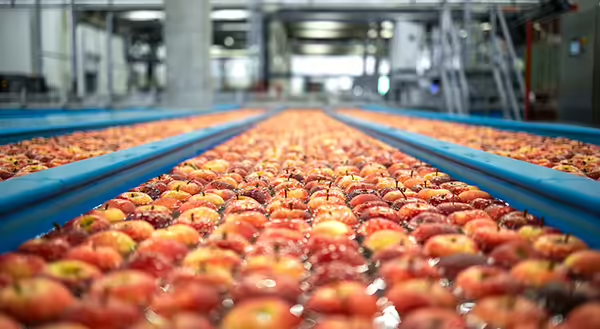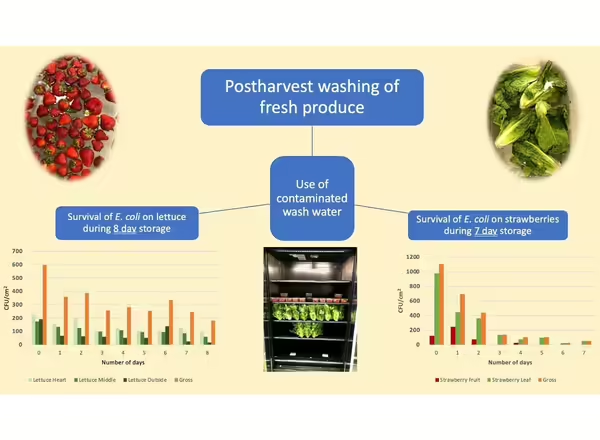
Washing fresh produce after harvest has several benefits including removing soil and cooling produce. The Produce Safety Rule does not require growers to wash fresh produce. If growers choose to wash fresh produce, then the water used must meet the no detectable Generic E. coli per 100 mL microbial quality. Contaminated water will spread foodborne pathogens to fresh produce and, in some cases, these pathogens infiltrate into the plant tissues where they cannot be removed easily.
Figure 1 shows a summary of research on how many days E. coli can survive on romaine lettuce (left graph) and on strawberries (right graph) that are washed with contaminated water and then stored in a refrigerated display case.
Research Takeaways
- Foodborne pathogens can be transferred from contaminated wash water to fresh produce during the washing process.
- Foodborne pathogens can remain on fresh produce for more than a week after washing with contaminated water.
- Storing fresh produce under cold temperatures does not remove all foodborne pathogens introduced by contaminated wash water.
Conclusion
If you want to wash fresh produce, always use water that meets the NO detectable Generic E. coli per 100mL microbial quality criteria and change the wash water often. Treating water with an EPA-labeled sanitizer may help meet the required microbial quality of wash water and maintain this quality during the washing process.
